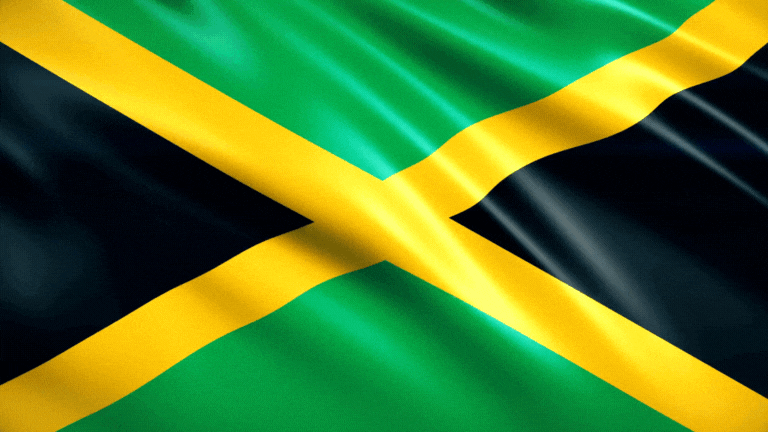Please be aware that this article may contain links to products and services we recommend. If you click on any of these links, we may earn a commission at no extra cost to you. We only endorse products and services that we believe will add value to our readers. Learn more here.
Jamaica Flag: History & Symbolism
Hack The Quiz
7/4/20242 min read
This article explores the history and symbolism of the Jamaica flag, highlighting Jamaica’s location in the Caribbean and explaining how the flag’s design reflects the nation’s strength, wealth, and resilience.
Where is Jamaica?
Jamaica is an island nation located in the Caribbean Sea, south of Cuba and west of Haiti. Known for its lively culture, reggae music, and tropical landscapes, Jamaica is famous for its mountains, rainforests, and pristine beaches. The island has a rich history rooted in African, European, and indigenous influences.
Jamaica gained independence from the United Kingdom on August 6, 1962, and the national flag was adopted the same day. The bold design of the flag symbolizes the resilience and potential of the Jamaican people, as well as the beauty of the island.
The History of the Jamaica Flag
The Jamaican flag was officially adopted on August 6, 1962, the day the country gained its independence from British colonial rule. The flag was selected through a national competition, with its design chosen to represent the unique identity of Jamaica and its bright future as an independent nation.
The flag’s striking design includes colors that reflect the natural beauty of the island, the strength of the Jamaican people, and the country’s agricultural wealth. Since its adoption, the flag has become a symbol of national pride and unity, flown during significant events such as Independence Day and international gatherings.
Breaking Down the Jamaica Flag’s Design
The flag of Jamaica is made up of three colors—black, green, and gold—arranged in the shape of a diagonal cross, or saltire. Each element of the flag carries significant meaning tied to Jamaica’s history, identity, and aspirations.
Let’s break down the elements of the flag:
The Black Triangles
The two black triangles represent the strength and creativity of the Jamaican people. Black also symbolizes the hardships and struggles that the country has faced throughout its history, and the resilience of its citizens in overcoming them.
The Green Triangles
The two green triangles represent Jamaica’s agricultural wealth and lush vegetation. Green also symbolizes hope and the island’s fertile lands, which have historically been vital to its economy.
The Gold Cross
The gold diagonal cross, or saltire, represents the natural wealth of Jamaica, including its sunshine and mineral resources. Gold also symbolizes the bright future and optimism of the Jamaican people as they continue to build their nation.
Final Thoughts
The flag of Jamaica is a bold and dynamic symbol of the nation’s resilience, natural beauty, and strength. The black, green, and gold colors reflect the country’s past struggles, its rich natural resources, and its hopeful future. The design is a powerful representation of the island’s unique identity and the pride of its people.
Since its adoption in 1962, the flag has been a cherished emblem of national pride, flown during important celebrations such as Independence Day and at international events. It stands as a reminder of Jamaica’s strength, its journey to independence, and its potential for a prosperous future.
Expand your mind ...
Explore trivia that broadens your understanding and knowledge of the world.
WE ARE HERE FOR YOU
JOIN US and hack the quiz
info@hackthequiz.com
© 2024. All rights reserved.



